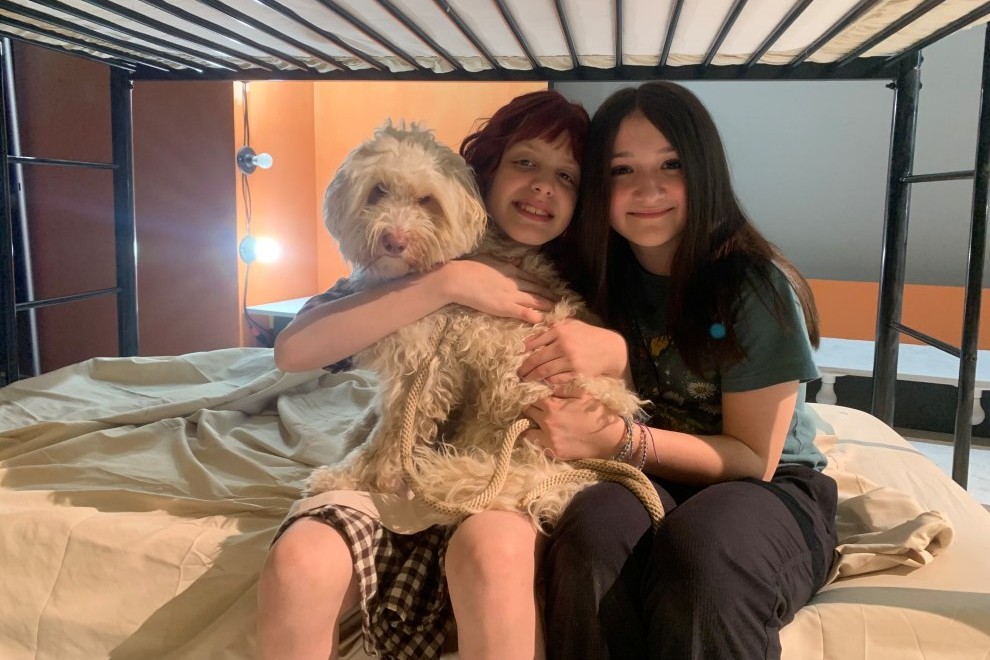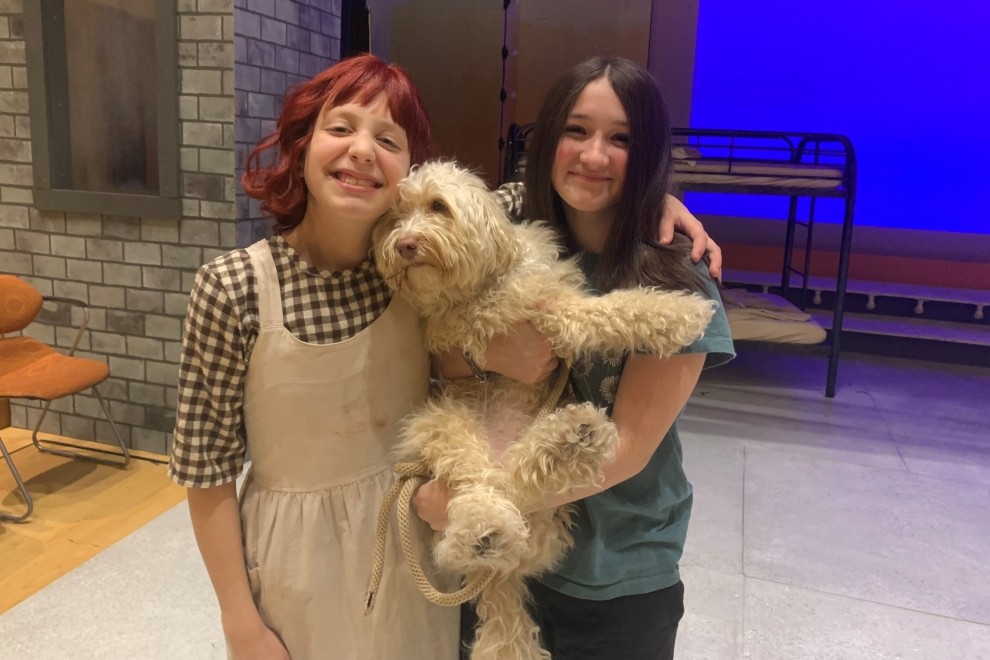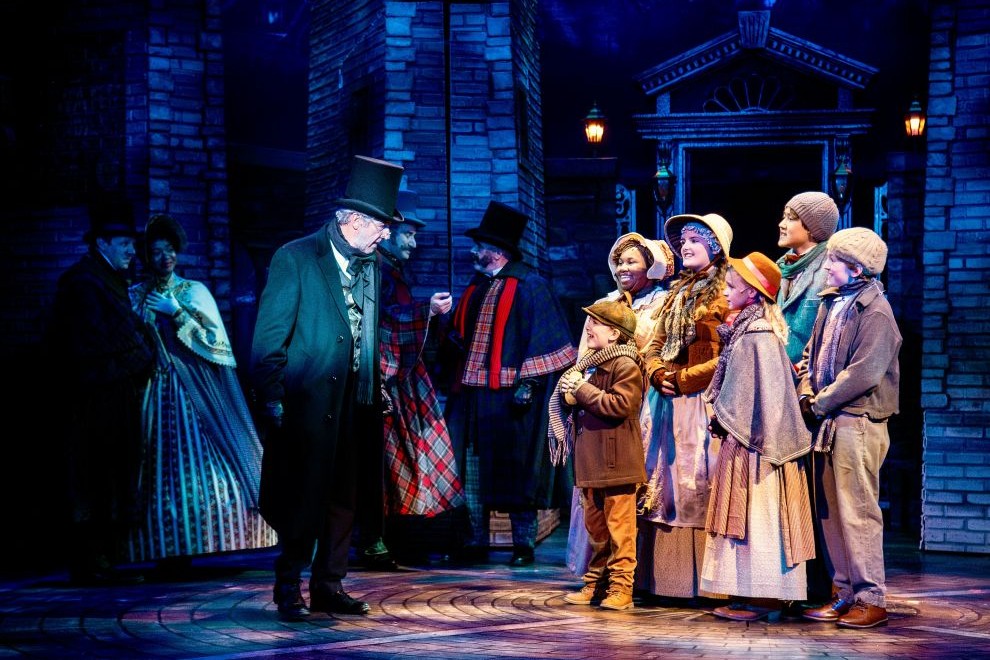Henrik Ibsen’s classic play, A Doll’s House (premiering in 1879), was not at all unfamiliar to me as it is a staple in collegiate theatre history courses. In it, Ibsen turns a lens on the complications of domestic life from the point of view of Nora Helmer, who is at once a pampered wife, and a bird stuck in a gilded cage. At the end of the play, Nora walks out the door leaving behind her husband, Torvald, the children, and nanny, Ann Marie, in what became known as the door slam heard around the world. Ibsen noted it as a modern tragedy, making the statement that “a woman cannot be herself in modern society.”
Fast forward to Lucas Hnath’s 2017 sequel where the playwright has the storyline picking up fifteen years after the original. The play begins with a knock and Nora (played Katrinah Carol Lewis) returning to a house that has been scrubbed of her presence. The set designed by Katherine Field makes this plain as we encounter a seemingly sanitized parlor room with two chairs and gray marbled walls that are conspicuously bare. The forced perspective accomplished with two walls forcing the focal point to a single door upstage is an immediate cue that this sequel will begin exactly where the first play ended.
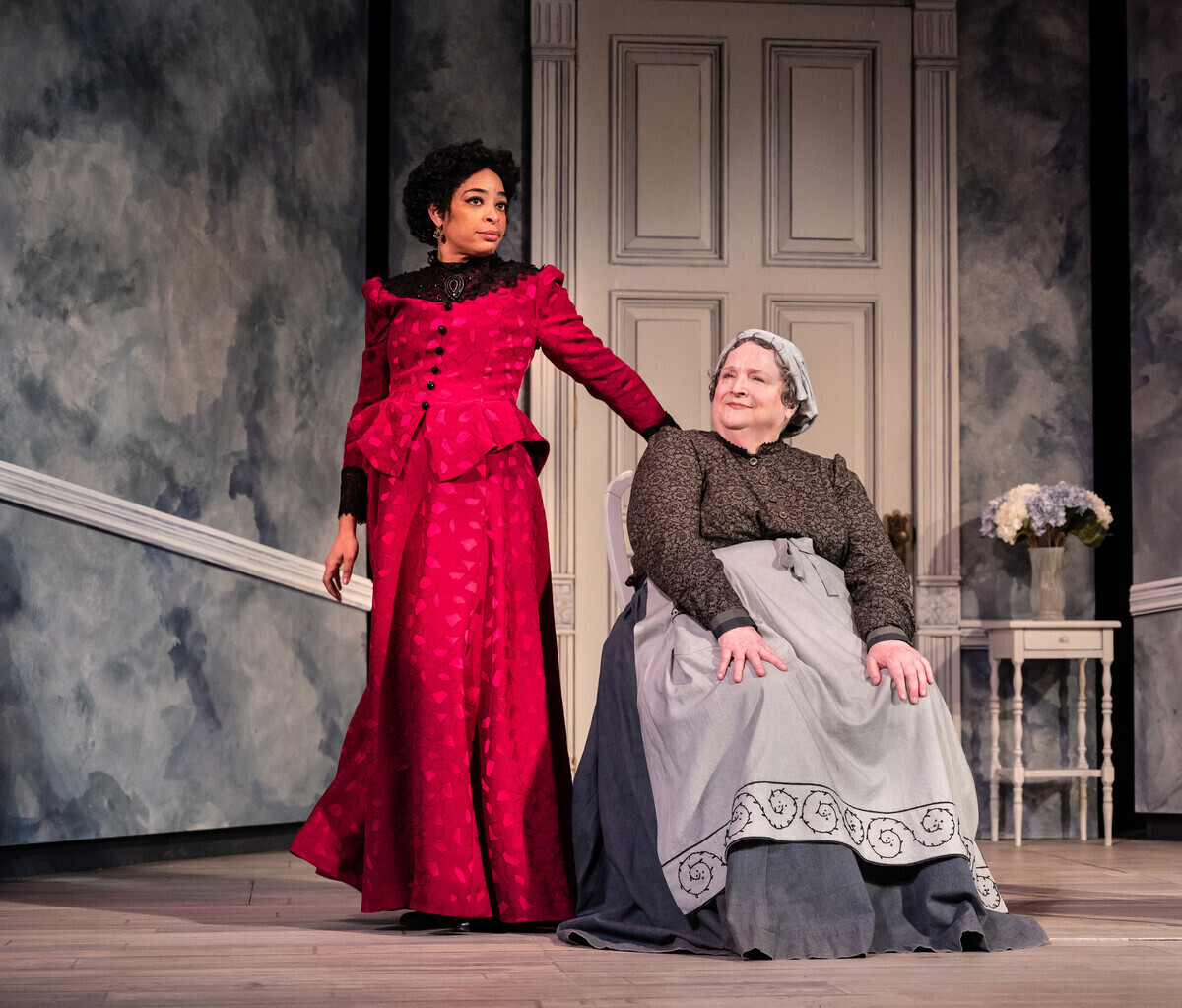
We learn that Nora thought it best not to interfere with and make contact with her family so as not to disrupt the healing process from the wounds she’s made. To that end, Nora hasn’t returned to reconcile with her family, not necessarily. She has found herself in a bind that can only be rectified by the husband she abandoned.
A Doll’s House, Part 2 raises some poignant questions for audience members about modern womanhood that many married mothers in particular may empathize with. What are the expectations and restrictions placed on mothers and wives, what is sacrificed, what might life look like instead for a woman who has put herself and desires first and does “all the things that married women aren’t allowed to do,” instead of giving over to a crippling responsibility?
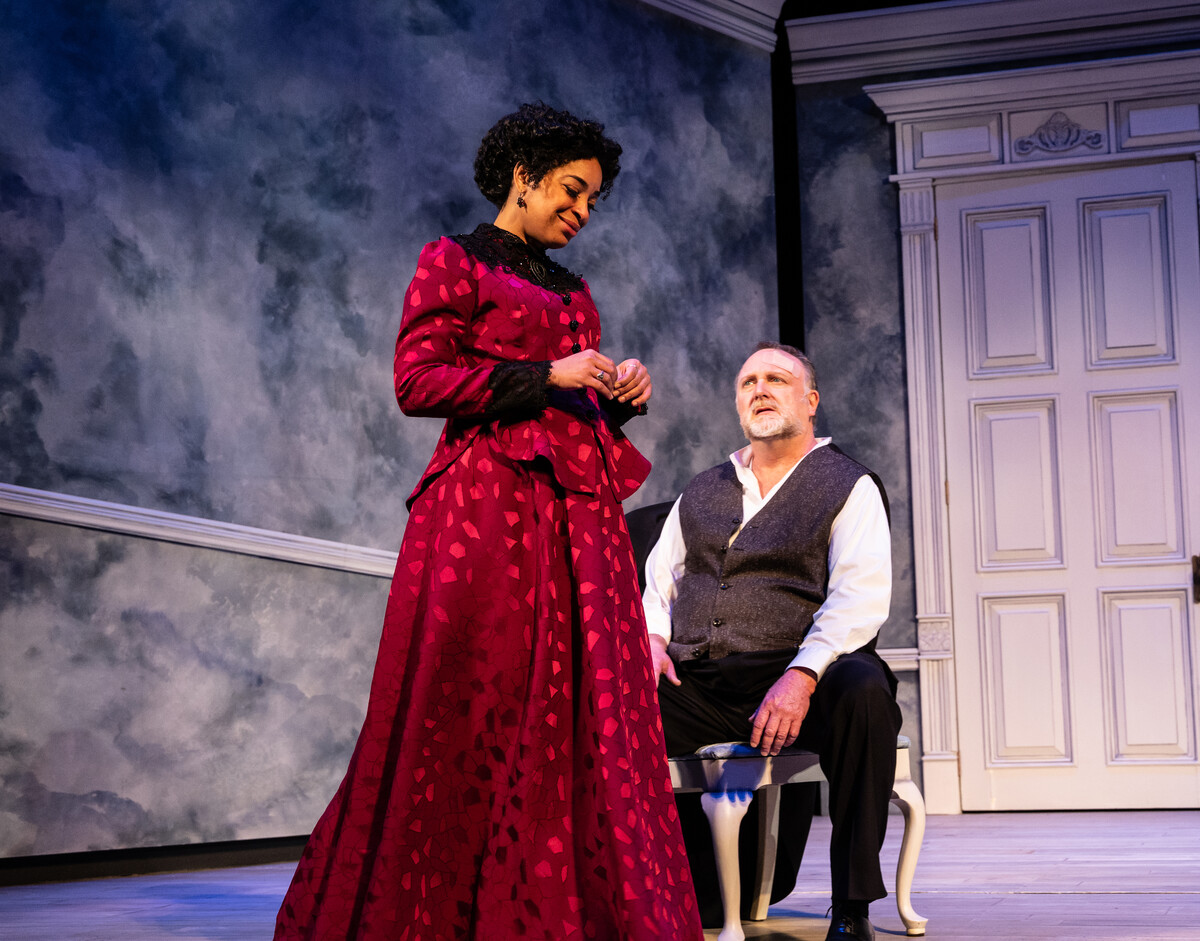
Sharon Ott’s direction has these actors sparring with lively agility on stage. It was fascinating to watch Katrinah Carol Lewis, who is reprising the role of Nora after TheatreLab’s 2018 production of A Doll’s House, vacillate between the poise and grace of a refined lady and the relaxed posture and speech of a woman of the world when irreverence struck. Audiences may also be struck by the modern music playing as the pre-show to foreshadow the modern language of the dialogue.
Recommended for fourteen an up, this well-acted comedy (definitely compared to the original) runs about an hour and a half and is performed without an intermission. If you’re in the mood for a smartly written and acted comedy, you don’t need to have seen the original to enjoy this production.
A Doll’s House, Part 2 plays at Virginia Rep’s November Theatre until Sunday, February 27. For showtimes and tickets, go here.
Feature photo by Aaron Sutten: Katrinah Carol Lewis, Catherine Schaffner, David Bridgewater, and Katy Feldhahn. [Photo by Aaron Sutten]
[vcex_divider color=”#dddddd” width=”100%” height=”1px” margin_top=”20″ margin_bottom=”20″]
To provide the highest level of safety, all patrons are required to show proof of vaccination, or proof that they have received a negative COVID test by a professional technician within 48 hours of the performance date/time.
Patrons must show your vaccination card or a photo of the card on your phone, along with a valid photo ID, when you arrive for the performance. If you are unable to be vaccinated, you may provide proof of a Rapid COVID-19 antigen test taken within 48 hours of your performance. At home tests will not be accepted.
Please see Covid Safety FAQ for details.
In accordance with current city, state, and CDC guidance, face masks are REQUIRED at all times while you are in the building, regardless of whether or not you have been vaccinated. At this time, no food or drink is allowed in the theatre.



